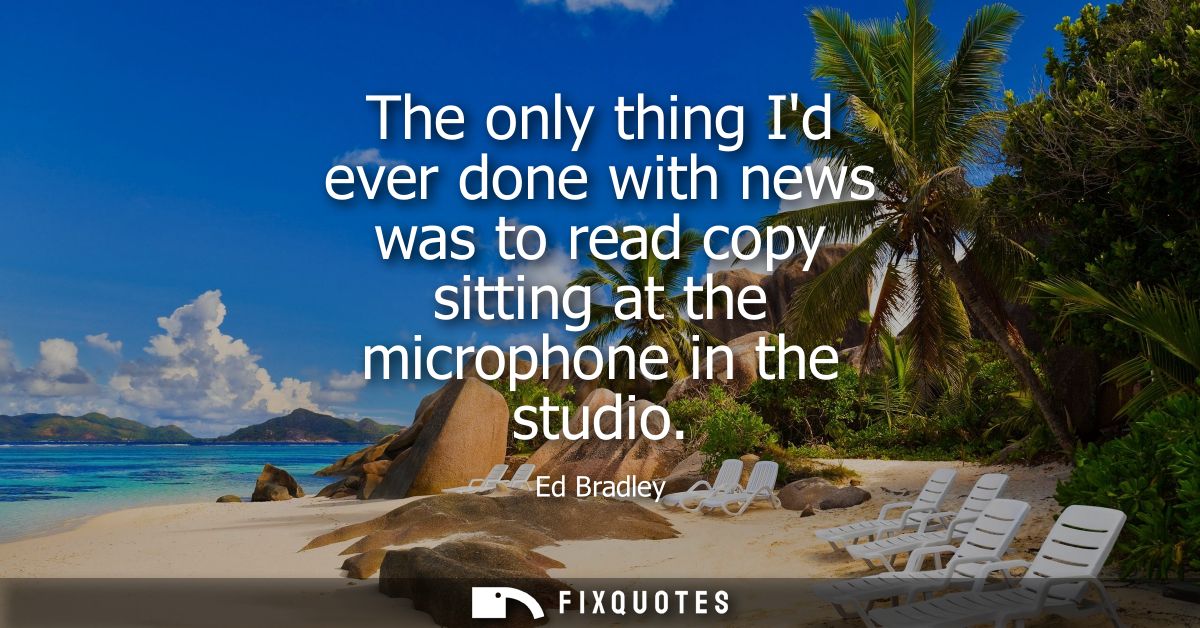"The only thing I'd ever done with news was to read copy sitting at the microphone in the studio"
About this Quote
Ed Bradley expresses a clear and modest reflection on the scope of his early experience in journalism. His statement reveals that his initial involvement with news was limited strictly to reading pre-written news scripts, “copy”, directly into the microphone, likely as a radio announcer or broadcaster. This role, while significant as an entry point into journalism, kept him at a remove from the processes of investigating, researching, and creating the news content itself. He did not, in those early days, conduct interviews, chase leads, or shape stories; he was the final voice delivering information crafted by others.
Such a statement highlights the often rigid roles within earlier broadcast newsrooms, where responsibilities were sharply divided. The news reader's voice lent authority and personality to material created elsewhere, but rarely ventured beyond the literal script. Bradley’s recollection carries a tinge of humility. It suggests awareness that many perceive journalism as an active, sometimes heroic vocation, filled with legwork and discovery, rather than simply serving as the mouthpiece for finished reports. He underscores how much he still had to learn and experience before attaining mastery of his craft.
This perspective also hints at the journey that many journalists, especially broadcasters, undertake as they evolve in their careers. The transition from simply disseminating the news to shaping and curating it marks a significant professional maturation. Reading news at a microphone might offer safety, structure, and the thrill of public communication, but it often leaves one craving deeper engagement with the truth-seeking mission at journalism’s heart. Bradley’s candid acknowledgment reminds us of the humble beginnings from which even the greatest journalists often start, advancing step by step from passive conduits for information to active creators and analysts of the stories that shape public understanding. It is a testament both to the hierarchical nature of newsrooms and the personal ambition that propels growth within them.
More details
About the Author

